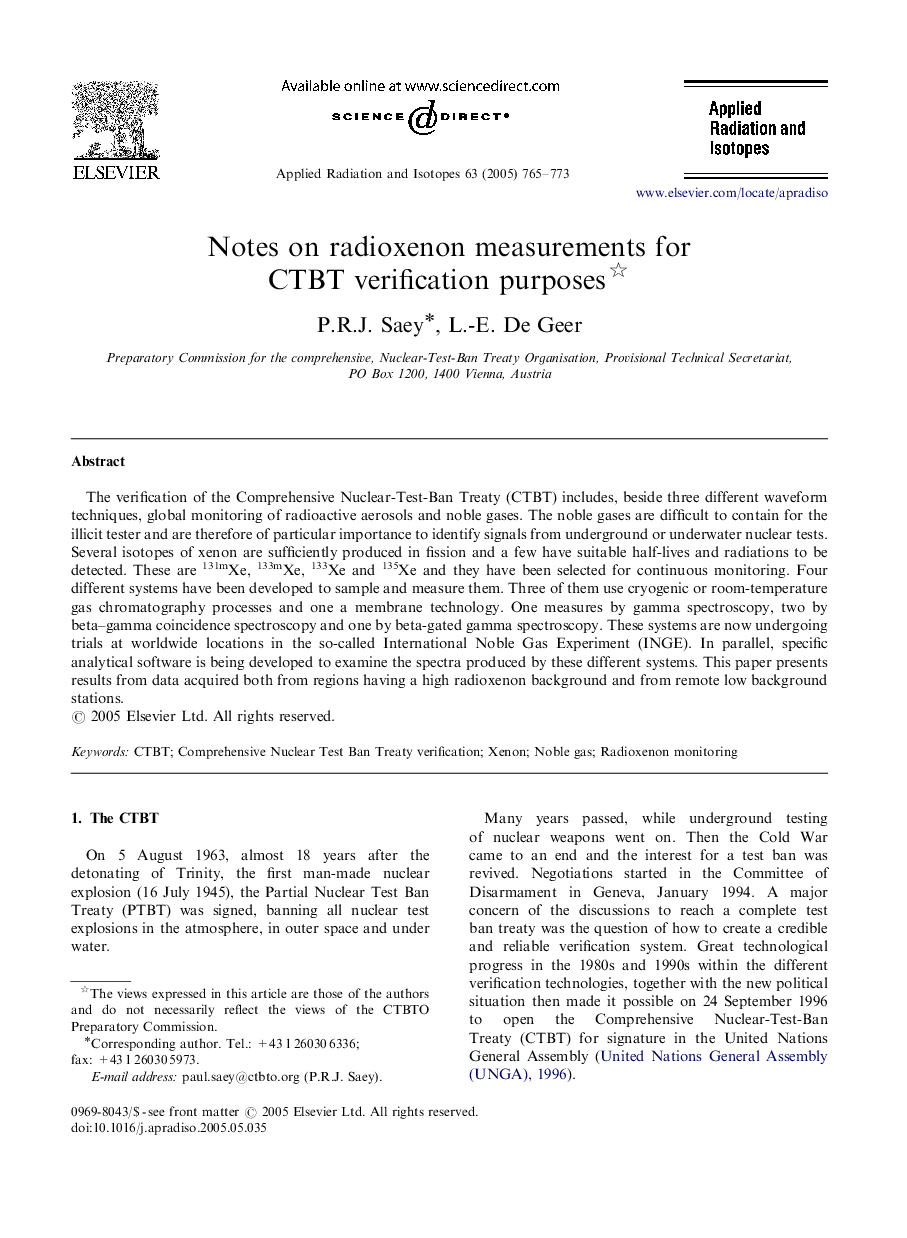| Article ID | Journal | Published Year | Pages | File Type |
|---|---|---|---|---|
| 9871654 | Applied Radiation and Isotopes | 2005 | 9 Pages |
Abstract
The verification of the Comprehensive Nuclear-Test-Ban Treaty (CTBT) includes, beside three different waveform techniques, global monitoring of radioactive aerosols and noble gases. The noble gases are difficult to contain for the illicit tester and are therefore of particular importance to identify signals from underground or underwater nuclear tests. Several isotopes of xenon are sufficiently produced in fission and a few have suitable half-lives and radiations to be detected. These are 131mXe, 133mXe, 133Xe and 135Xe and they have been selected for continuous monitoring. Four different systems have been developed to sample and measure them. Three of them use cryogenic or room-temperature gas chromatography processes and one a membrane technology. One measures by gamma spectroscopy, two by beta-gamma coincidence spectroscopy and one by beta-gated gamma spectroscopy. These systems are now undergoing trials at worldwide locations in the so-called International Noble Gas Experiment (INGE). In parallel, specific analytical software is being developed to examine the spectra produced by these different systems. This paper presents results from data acquired both from regions having a high radioxenon background and from remote low background stations.
Related Topics
Physical Sciences and Engineering
Physics and Astronomy
Radiation
Authors
P.R.J. Saey, L.-E. De Geer,
